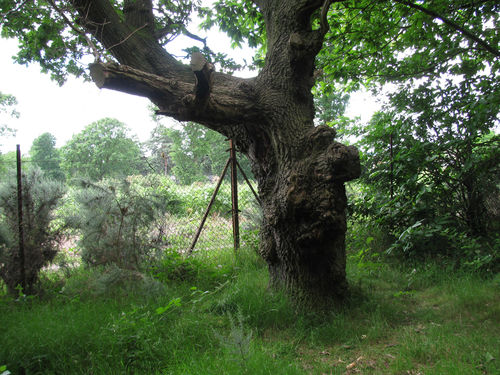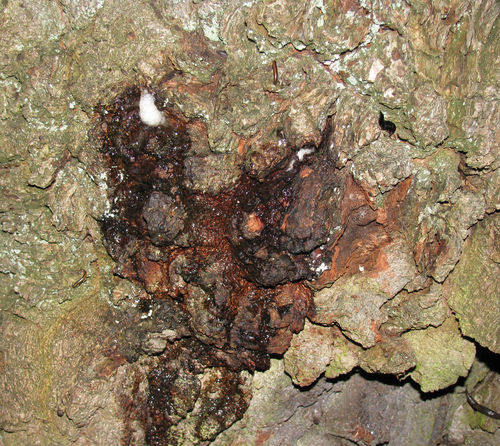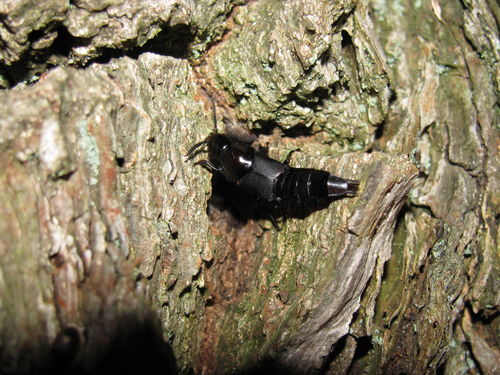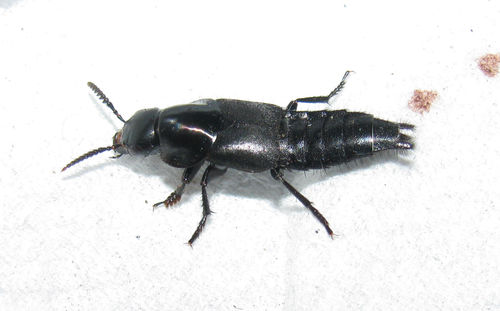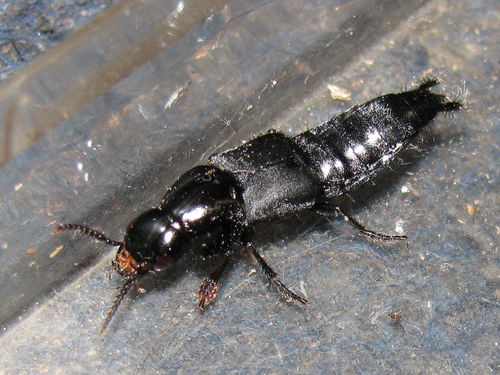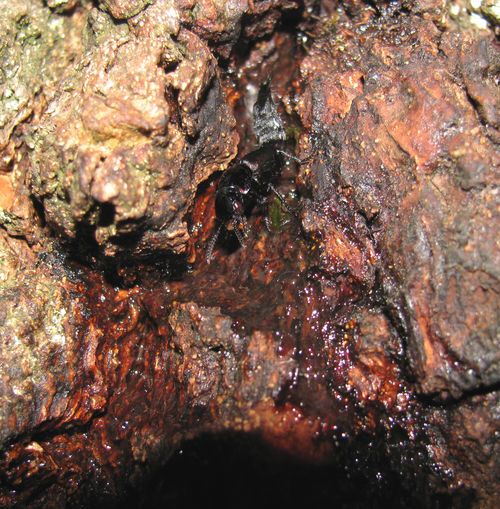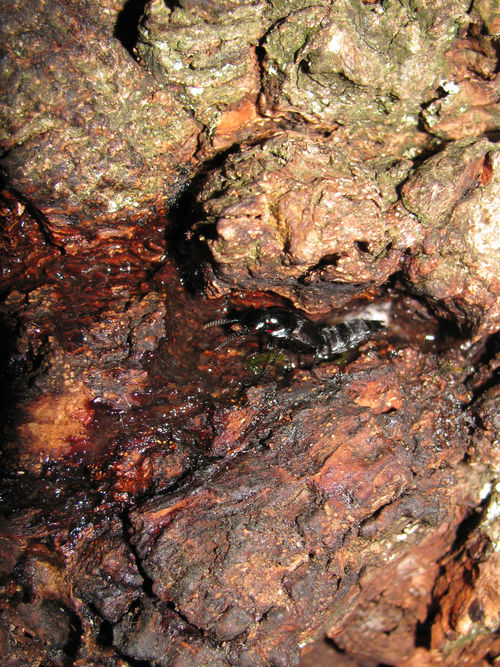Hornet Rove beetle Velleius dilatatus (F., 1787) (Col., Staphylinidae) at Kidderminster, Worcestershire
Alan Brown
On the 15 June 2014 three specimens of the endangered Hornet Rove Beetle Velleius dilatatus (F.) were found at night at an oak sap-run in woodland alongside the Devil’s Spittleful Nature Reserve, Kidderminster.
Distribution.
Historically this species had only been recorded from the New Forest, Windsor Forest and Moccas Park, but recently it has been recorded further afield at Dartmoor Deer Park, Epping Forest, Norfolk, Nottinghamshire and Lincolnshire.
Habitat
A sap-run was located on a mature Pedunculate Oak Quercus robur L. (01 & 02) just inside the fringe of a patch of mixed ancient woodland most of which is privately owned. However, a public path leading to the heath through this area allows access to some of the ancient trees, mainly oak, but also birch, Sycamore and lime. A vigil was arranged to see what species turned up at night on the sap-run with interesting results. Two notable species, Cryptarcha strigata (F.) and Cryptarcha undata (Ol.) appeared in numbers with an Epuraea species and a number of Soronia grisea (L.). However, my attention was drawn by a large black rove beetle and I was convinced that it matched the description of Velleius dilatatus, an endangered species. Photographs (03, 04, 05 & 06) were taken and this identification was confirmed by Paul Whitehead who also noted that the sap-run was possibly a Cossus flux but this could not be confirmed.
Behaviour
At least three different individual Hornet Rove Beetles were observed over the following seven nights, sometimes all three together. The white light on my headband torch disturbed them too much to observe any behaviour so I switched to a red light which they were not able to detect. Each night the Hornet Rove Beetles appeared at the sap-run within an hour of it becoming dark and remained there for most of the night. All three were males and always kept some distance between each other at different points around the sap-run. Eventually one male started investigating the sap and at first I thought he was ingesting the sap but it soon became obvious that he was looking for something in it. He then extracted what looked like a white larva, possibly a fly larva although this could not be verified. Later a second beetle retrieved what looked like a fly pupa (07 & 08) but again I could not make a definite identification. However, one larva I did find in the sap was positively identified by Paul Whitehead as Cryptarcha.sp. A daily night time temperature taken at the base of the tree averaged a mild 16° Celsius. Random checks of the sap-run were made during daylight hours but no Velleius dilatatus were seen. After a week the sap-run dried up and that was the end of my observations.
Notes
The Hornet Rove Beetle is an interesting species that spends almost its whole life living in hornet’s nests and is therefore dependent on the success of its host. There are various theories as to what it feeds on, some literature suggests it is parasitic on fly maggots that infest the hornet’s nest or that it feeds on hornet detritus and even on dead or dying hornets. In recent years however the range of the hornet has spread slowly northwards and likewise the range of this rove beetle. Although there is no doubt that this species does most of its feeding within the nest there are obvious indications here that when food is scarce the beetle is drawn to sap-runs to seek alternative prey. It clearly responds well to olefactory cues and can fly well and link the odour of sap to its preferred food. This find, which is a first for Worcestershire, would also seem to indicate that Velleius dilatatus may become more widespread in the future.
Images
01. Oak tree on which sap run was found.
02. Sap-run on oak tree
03. Velleius dilatatus
04. Velleius dilatatus
05. Velleius dilatatus
06. Velleius dilatatus
07. Velleius dilatatus with fly pupa
08. Velleius dilatatus with fly pupa
